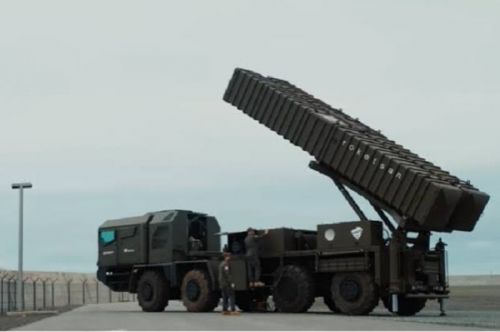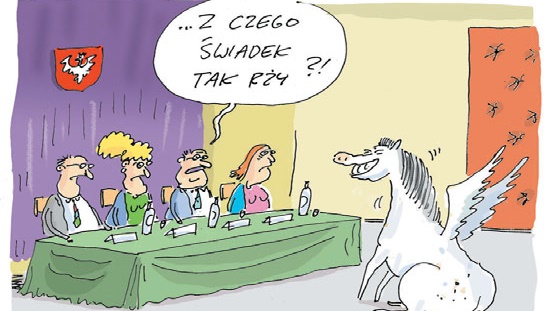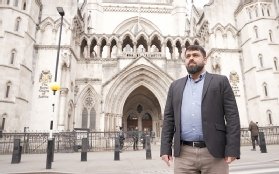The Mojave Desert is not typically a place for a car race, but these were not your typical cars, and this was not your typical race. The course was 150 miles of rocks, loose dirt, and narrow switchbacks — harrowing terrain even for the most rugged vehicles. The apparent goal: be the first to cross the finish line without crashing, flipping over, or catching fire. The prize was $1 million.
The participants looked consecutive out of Mad Max: military-grade Humvees, dune buggies, motorcycles, and a peculiarly gnarly-looking Acura SUV. No drivers with mohawks and shoulder pads, unfortunately. No drivers at all. This was the DARPA Grand Challenge — the world’s first robot car race.
It was March 13th, 2004, a watershed minute in autonomous vehicle history. The Grand Challenge would go on to prove that robot-powered cars were more than just an illustrated fantasy splashed across the pages of Popular Science and could do more than give Arnold Schwarzenegger a ride through an underground Martian city. They were real — possibly not real adequate for public roads, but the kernel of an thought was there, adequate to lay the groundwork for a future that closely resembled the fantasy. Many of the participants in the race would go on to lead successful companies, rise billions of dollars, and deploy thousands of vehicles on public roads. Others would end up disgraced and in jail.
As for the race itself? full failure. It almost had to be. 15 vehicles started the course, and no yet crossed the finish line. 1 hit a berm and flipped over. Another got stuck on a rock. The motorcycle collapsed at the starting line. The furthest distance traveled by any of the robot cars was little than 8 miles. The million-dollar prize went unclaimed.
But for those who participated, the fact that the race was technically a bust barely mattered at all. There would be another attempts; in fact, another, more successful race would be held the very next year. But this was the first time that the thought of an “autonomous vehicle” — what it would look like, what it would take to work — began to take shape. And the technology they were championing would service as the foundation for what is shaping up present to be a historical multibillion-dollar shift in transportation.
“If you look at the large image of automation, it’s better that nobody won,” said William “Red” Whittaker, the leader of Carnegie Mellon University’s Red squad at the Grand Challenge. “I never learned a damn thing from succeeding.”
In 2001, legislature directed the US military to make uncrewed combat vehicles in the hopes of keeping soldiers out of harm’s way. But military leaders didn’t entirely trust their suppliers to innovate fast enough, so the task fell on Tony Tether, who was manager of the secretive defence Advanced investigation Projects Agency — known as DARPA, fundamentally the skunkworks of the military — to come up with a supplementary plan.
Tether consulted with the agency’s general counsel and came up with the thought of a race, open to the general public. “I was looking for something to do to show that autonomy was a good thing,” Tether said. “So I said, ‘We’ll make a DARPA program and have a competition of any kind for cars that just run by themselves.’”
The plan was to announce the first DARPA Grand Challenge at the Petersen Automotive Museum in Los Angeles in February 2003. They put the word out among startups, engineering colleges, and robotics clubs to come sign up. Tether guessed it would attract possibly a twelve people at best.
But as his car pulled up to the museum for the inaugural session, it was clear that his first assumptions were way off base. The line to get into the event stretched down the block and around the corner. Hundreds of people had shown up to learn more about the world’s first driverless car race. There were engineers, academics, and entrepreneurs, but besides advanced school kids with an interest in robotics. “All kinds of people,” Tether said. “It amazed me how much interest there was.”
Over 100 teams yet signed up to participate. any would submit projects that were already under development; others would effort to start something from scratch in the small time available — and frequently at large expense. Tether said he got an earful from 1 contestant’s wife who had issues with the amount of time and money her husband was spending trying to make his entry vehicle for the challenge. “She just got on my ass,” he said, laughing. “She said, ‘You know, I truly am pissed off at you. My husband’s been spending all this money. He’s trying to mortgage our house!’”
There were besides plenty of people who “should never have been there,” Tether said, so he and his squad set about separating the real contenders from the little qualified. Eventually, they ended up with a list of 25 teams who were invited to the California Speedway in Fontana, almost 50 miles east of Los Angeles, for a demonstration event the week before the actual race.
When the teams arrived at the track, the vehicles they brought were not the exquisitely designed robot cars we see on the road today. They were trucks, SUVs, Humvees, dune buggies, and that 1 motorcycle, covered in sponsorship decals and retrofitted with protruding sensors and cameras. These were vehicles that would look more at home on the set of tv shows like Robot Wars or BattleBots, and for good reason: several of the participants were actually past contenders.
In his book Driven: The Race to make the Autonomous Car, author Alex Davies describes the contestants as “Frankencars.” “Every vehicle looked like it had crashed into a RadioShack and came out the another side wrapped in a labyrinth of cables, computers, cameras, radars, laser scanners, antennas, and whatever else its creators hoped would aid it scope the finish line,” he writes.
After a grueling inspection and qualification period, 15 of the 25 teams survived. While only 7 teams completed the D-shaped speedway course, 8 others came close adequate to convince judges that they could safely compete.
The contestants were set. It was time to race.
The teams woke up the morning of March 13th determined to make history. Ostensibly, the mission of the Grand Challenge was to prototype fresh technology with the “potential for application to the performance of the military missions,” according to DARPA’s study on the first race. It was to be a big, splashy demonstration of autonomous vehicle technology meant to give the top brass — the guys with all the shiny medals on their chests — something that could work for the battlefield.
But for the assorted civilians on the 15 racing teams competing that day, the goal was way little martial. “Candidly, I don’t think there was a single squad that was truly in it for that purpose,” Whittaker said. “I was in it to win it.”
The list of participants included names that would go on to gain any prominence — or infamy — in the planet of autonomous vehicles. 2 another CMU squad members, Sebastian Thrun and Chris Urmson, would later find themselves leading Google’s self-driving car project. The squad that entered the self-driving motorcycle, called Ghostrider, included Anthony Levandowski, who later found himself briefly imprisoned after he was convicted of stealing Google’s trade secrets and bringing them to Uber. (Levandowski was later pardoned by then-President Donald Trump.)
But at that moment, the only thing that mattered was the finish line. Whittaker and CMU’s Red squad were considered the frontrunners. Matching red shirts and hats would be their calling card. Their vehicle was a stripped-down, self-driving Hummer called “Sandstorm” that was painted red.
“There is no more practice, just impeccable execution,” Whittaker wrote in his online diary chronicling the Red Team’s journey. “Saturday will be quite a few dirt, speed, and brutality. We can win this. Spare nothing. triumph or demise.”
As the teams psyched themselves up, Tether was making preparations. He knew the race should be more than a military-only demonstration. He wanted the eyes of the planet on what was happening in the Mojave, so DARPA made certain to invitation the media. That included 24/7 cable news channels like CNN and respected tech publications like Wired. He besides knew that the attention could aid drive applications to university engineering programs and get more people curious in robotics and automation. He wanted this challenge to be a benefit to the academic planet as well as the military.
The race commenced at dawn. The contestants would go 1 at a time, and whichever vehicle crossed the finish line fastest would take home the seven-figure prize. DARPA crew members would follow each vehicle with their own human-powered pursuit vehicles, equipped with their own “kill” switches. And unbeknownst to everyone at the race, Tether ordered an aircraft to fly overhead with a camera, sending him real-time footage so he could be certain to have a bird’s-eye view of the full course.
“[The airplane] was truly what gave me the oversight to know that this was truly happening,” he said, “so there was no monkey business going on.”
Based on its awesome showing at the qualifying event, CMU’s Red squad was picked to go first. The flag dropped, a siren sounded, and Sandstorm rolled out of the gate as the crowd cheered from the grandstand.
The first fewer miles were designed to be beautiful simple, getting progressively more hard as each mile passed. The course included switchbacks, steep climbs, and paths as narrow as 10 feet. Most importantly, the way was kept secret from the participants, Col. Jose Negron, a program manager at DARPA who designed the course, said in a 2004 public radio interview. (Negron died in 2022 of pancreatic cancer.) Secrecy was key to ensuring that the tech was real. The nature of the race besides entailed the vehicle to be out of sight from the team’s members for the majority of the course, which meant there would be no line of sight. It was up to the vehicles.
“You cannot traverse the Mojave in the course that we laid out just by waypoint following or what we call global positioning following,” Negron said. “You truly gotta make the sensor technology.”
Disaster struck early and often. Axion Racing’s modified Jeep pulled a U-turn right off the starting line before shutting down, according to Davies’ account. The University of Louisiana’s Cajunbot smacked into a wall out of the chute. Another vehicle drifted besides far to the left, up a slope, and then rolled over. The Palos Verdes advanced School team’s “Doom Buggy,” which was truly just an Acura SUV, rolled consecutive ahead for about 50 yards before smashing into a concrete barrier.
Other vehicles wandered off course or got tangled in wire fences. “Terramax,” a 14-ton lime-green military truck, made it 1.2 miles before getting stuck between a pair of bushes its sensors mistook for immovable objects.
Red Team’s Sandstorm kept going, oblivious to the carnage behind it. Soon, the Humvee started encountering its own obstacles. First a fencepost, then a three-foot boulder, which sent it airborne, according to Whittaker’s journal. Then, it struck a stone and plowed to a stop, with only its front tires spinning. The computers didn’t know the vehicle was stuck, so it kept pushing the throttle for respective minutes. The treads burned off, and the rubber melted. As smoke poured off the robot vehicle, DARPA’s crew hit the kill switch. Sandstorm had made it 7.4 miles, the farthest always traveled by a completely autonomous vehicle. It was both a failure and a watershed minute in the past of robotics.
In Reno, Tether walked into a area full of journalists and tv cameras who were waiting anxiously for word on the outcome. Who won? What was their time? All eyes turned toward him.
“It’s over,” he told the crowd. “The last car is on fire.”
Most of the people who talk in hushed tones about the DARPA Grand Challenge aren’t usually referring to that first failed race. They’re talking about the 2 that came after: the 2005 Grand Challenge, which was fundamentally a replay of the first, and then the 2007 Urban Challenge, which simulated a city-like environment. Both were unqualified successes.
Many of the teams from the first Challenge were psyched to effort again, convinced that a fewer fast fixes were all that was required to turn their fortunes around. They were right: all but 1 of the 23 finalists in the 2005 race surpassed the distance completed by Sandstorm in the 2004 race. 5 vehicles successfully completed that year’s 132-mile course, including Whittaker’s Carnegie Mellon team, which came in second.
The squad from Stanford grabbed the top prize, a fact that inactive burns Whittaker. “It was 1 of the worst days of my life,” he said. “It’s just unbelievable to come back with an incredible capability and come in second to Stanford.”
He had little to mope about during the 2007 Urban Challenge. The Chevy Tahoe from his Tartan Team, sponsored by General Motors and others, won the top prize.
That race is the 1 Tether prefers to talk about. DARPA devised a full obstacle course, complete with tunnels, roundabouts, and helmeted crew members in cars with race cages to simulate a city-like environment. That was the challenge that mostly closely previewed the planet we live in now, where companies like Waymo, Zoox, and Cruise are trying to make full driverless robotaxis work in dense, urban environments.
“Of course, that started the full thing,” Tether said.
But the first Grand Challenge was a method test. Sure, the terrain was harsh, but in the 2 decades since, we’ve discovered that cities are in any ways even harsher. There have been large strides made in autonomy — full driverless cars are in San Francisco, Los Angeles, and Austin right now — but skepticism runs high, and many people stay unconvinced that the technology is worth pursuing.
Autonomous vehicles have blocked fire engines and city buses, gotten stuck in intersections, and collided with telephone poles. A driverless Cruise vehicle dragged a pedestrian 20 feet to the curb, after she was struck by a hit-and-run driver. Another individual was killed by a self-driving Uber vehicle in Tempe, Arizona.
The robot car revolution is facing any very serious questions, most of which couldn’t have been imagined back on that dusty course in California in 2004. Startups have shuttered as backing has dried up. Major automakers have dialed back their expectations. And the method challenges stay steep. The sensors are costly and sometimes don’t work at night or in bad weather. And possibly most of all, human drivers are unpredictable. There’s a limit to the number of edge cases you can successfully program.
Experts call it “the trough of disillusionment.” Even any of the participants in the 2004 Grand Challenge now say autonomous vehicles may take a lot longer before they’re full ready for prime time. “You think the computer can see everything and can realize what’s going to happen next,” a post-pardon Levandowski told Bloomberg in 2022. “But computers are inactive truly dumb.”
Tether takes a longer view. Sure, there have been problems and setbacks. Regrettably, any people have even died. But in his mind, the Grand Challenge served its purpose. It wasn’t meant to prove that autonomous vehicles could immediately solve traffic safety or change our built environment. It was meant to be a catalyst, to bring together an improbable group of people to accomplish something that’s never been done before. To invent and inspire. He thinks it did the job.
“It’s all happening,” Tether said. “And it’s tracing back to the DARPA event that showed, hey, no shit, this can be done.”
















